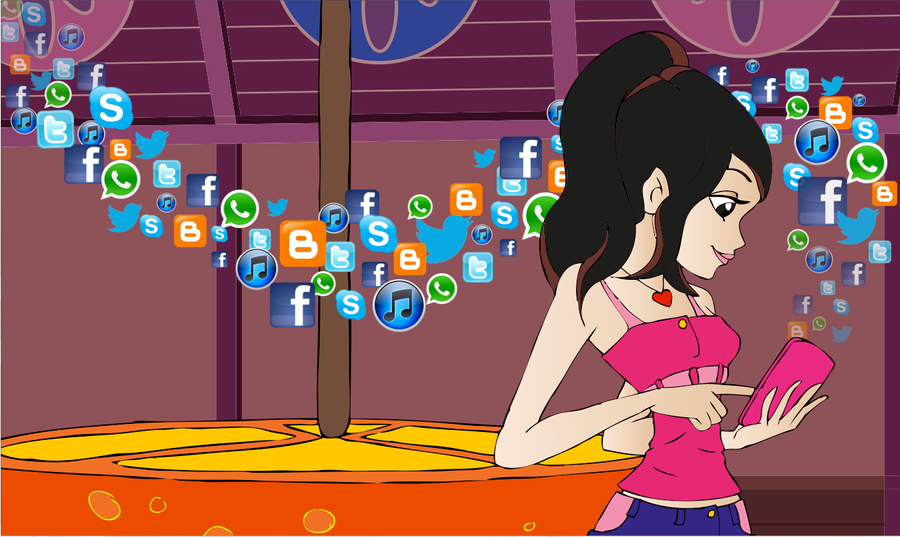By Sydney Brower, @sydpaigebro , sydneyd.brower []wsu.edu
Native advertisements, unlike traditional ads, blend in with user-generated content by looking like a regular post from a friend. The difference lies in the subtle product placement, and not your friend posting. Disguising ads reflect businesses’ longing for social post ads.

Researchers define social post advertisements when a consumer feels pleased enough with a product to post about it on their account. When a brand earns a social post, they reap the benefits of effective and free marketing. But do native ads actually sell products and boost brand image more effectively than traditional ads? Johnson, Potocki, and Veldhuis conducted a study on the three different styles of Instagram advertisements.
The researchers polled 482 avid Instagram users. They were shown six fictitious Instagram posts, advertising for Dyson vacuums, McDonalds, and Nivea sun. Below you will see the variables measured for each post, the type of measurement used, and the participants’ total average scores:
Results
| Variable | Measurement | Social Post | Native Ad | Traditional Ad |
| Social Comparison | I compared myself with the person in the posted picture. 1 = Strongly Disagree and 7 = Strongly Agree | 2.75 | 2.21 | 1.73 |
| Credibility | The ad is reliable, convincing, and credible. 1 = Strongly Disagree and 7 = Strongly Agree | 3.98 | 3.51 | 3.22 |
| Ad Attitude | 1 = Negative and 7 = Positive | 3.72 | 2.94 | 2.99 |
| Brand Attitude | 1 = Negative and 7 = Positive | 4.51 | 4.36 | 4.40 |
| Behavioral Intention | I plan on buying this product. 1 = Strongly Disagree and 7 = Strongly Agree | 3.84 | 3.68 | 3.73 |
The results above show a slight difference in the overall attitudes each participant had towards the different advertisements. Below you will find a breakdown of the results for each type of advertisement:
Social Post Ads: Some participants believed social post ads were sponsored, despite the absence of a “sponsored” disclaimer. With that said, this type of ad received the highest credibility and social comparative scores. This positively influenced the likelihood of participants purchasing the product. Social posts also received the highest ad and brand attitude scores. The researchers were not surprised that social ad posts were overall liked the most by participants, thus being the most effective form of Instagram advertising.
Native Ads: Although native ads did not blend in with user-generated content, they were still perceived as more credible than traditional ads. In addition, they elicited more social comparison from participants than traditional ads, yet lower than social posts. Compared to social posts and traditional ads, native ads scored the lowest for behavioral intention, ad attitude, and brand attitude.
Traditional Ads: Participants did not often socially compare themselves nor believe traditional advertisements. Users felt more likely to make a purchase after seeing traditional ads than the native ads. Traditional ads also beat native ads for positive ad and brand sentiment. Researchers had not predicted traditional advertising to earn better marketing results than native advertising.
The Instagram users responded relatively positively to all of the advertisement styles. Turns out, there is no need to cut out traditional ads from your social media marketing strategy. Instagram users are not more accepting of disguised ads than traditional ads. You could benefit from mixing up your advertising by using all three styles.
Johnson, B. K., Potocki, B., & Veldhuis, J. (2019). Is That My Friend or an Advert? The Effectiveness of Instagram Native Advertisements Posing as Social Posts. Journal of Computer-Mediated Communication, 24(3), 108–125.





 Looking into the recent past to see what people thought of the future, well, isn’t that half of the fun of visiting Tomorrowland? A recent study sampled 1,222 people between the ages of 18-29 to understand how they perceive the news, and where they see themselves getting the news in the future. The study was published in 2008, meaning data was likely collected around 2007.
Looking into the recent past to see what people thought of the future, well, isn’t that half of the fun of visiting Tomorrowland? A recent study sampled 1,222 people between the ages of 18-29 to understand how they perceive the news, and where they see themselves getting the news in the future. The study was published in 2008, meaning data was likely collected around 2007. Quan-Haase examined a wide-range of studies involving North American college and middle/high school students regarding their instant messaging habits, with whom they use IM to communicate, and the effects of IM on their social and academic life. Quan-Haase made the following baseline observations:
Quan-Haase examined a wide-range of studies involving North American college and middle/high school students regarding their instant messaging habits, with whom they use IM to communicate, and the effects of IM on their social and academic life. Quan-Haase made the following baseline observations: